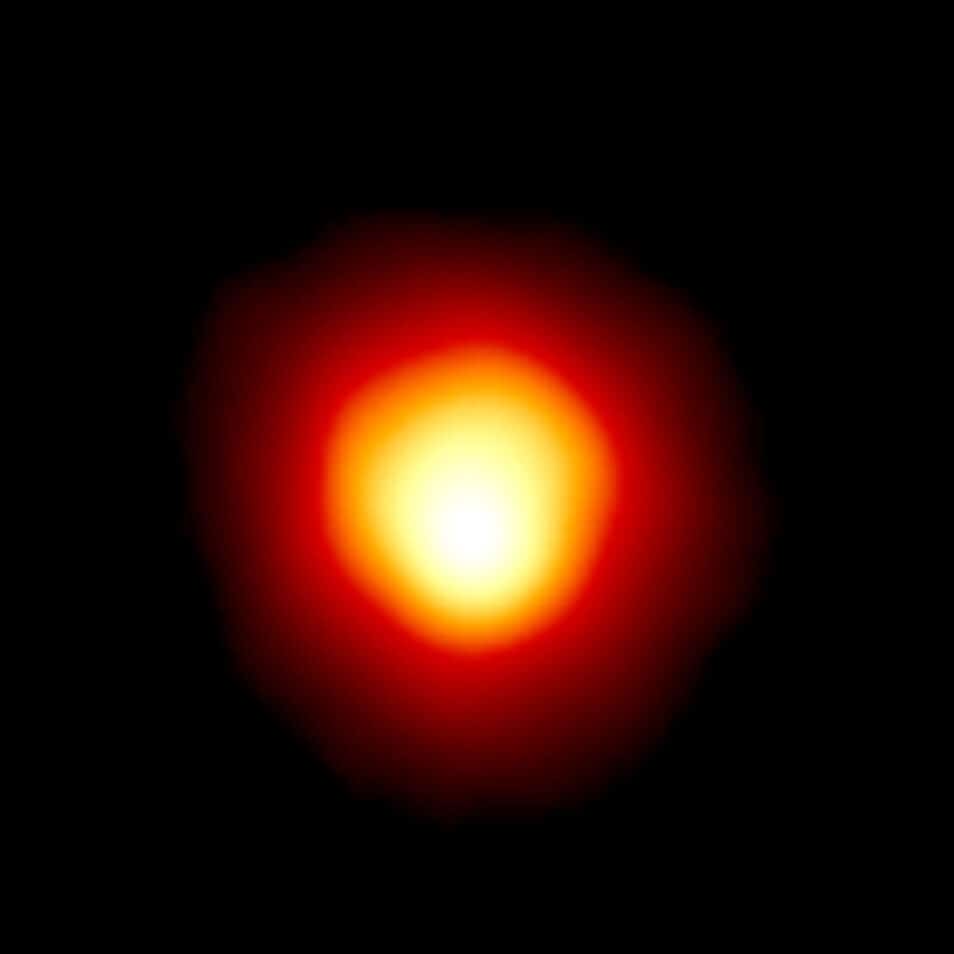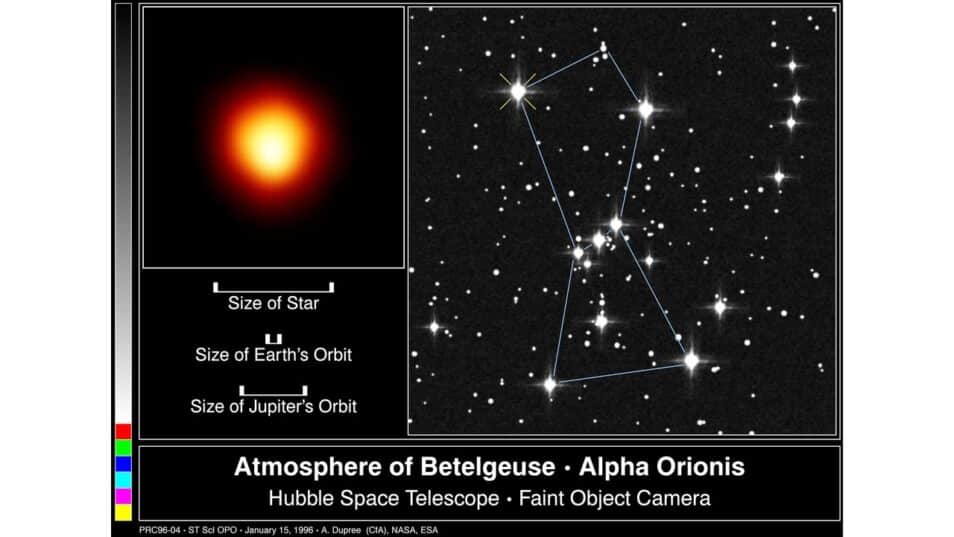In 1995, the Hubble Telescope took the first image of the atmosphere of a star other than the Sun: Betelgeuse. This huge star can be seen with the naked eye on clear evenings in the constellation of Orion, and its red color clearly distinguishes it from other stars.
The famous Hubble image of Betelgeuse – also known as Alpha Orionis – is this week’s Space Picture of the Week.
The red star is located about 530 light-years from Earth and is about 14 times more massive than our Sun. Astronomers expect the star to explode as a supernova in the near future. How long will that take? “Because of its current mass and age, Betelgeuse will go supernova in about 1.5 million years,” researcher Ralph Neuhäuser said in a conversation with Scientias.nl last year. The odds are so slim that we’ll ever see it.

Betelgeuse is in the news regularly. In 2019, the red giant’s brightness suddenly decreased. Was the star about to explode? Turns out that wasn’t the case. The great eclipse was the result of a drop in temperature on the surface of the red giant. “We witnessed first-hand the formation of the so-called stardust,” says researcher Miguel Montargues. Betelgeuse’s handcrafted dust shroud blocked some of the starlight, making Betelgeuse appear less bright.
Supernovae are the largest explosions that occur in space. They are caused by a change in the core of the star. This change may be the result of two different developments. In the case of Betelgeuse, the changes are caused by the star running out of fuel. Without this energy source, the star can no longer compete with gravity and part of its mass flows toward this core. It gets heavier and heavier until it collapses. This results in a massive explosion or supernova. Fortunately, the distance to Earth is large enough, so we will not be affected by a supernova explosion on our planet. Our distant descendants can expect an amazing fireworks display!
Betelgeuse is getting redder
Did you know that Betelgeuse looked different in ancient times? Recent research reveals that just 2,000 years ago, the star was yellow-orange, not red. Remarkably, the star can barely change color in 2,000 years. Neuhäuser: “Only at about fourteen solar masses can you expect a rapid color change in the past two thousand years, so that we can determine the mass more accurately.”

The white spot is noticeably hot
The Hubble image shows a strikingly bright spot. This white spot is hundreds of times larger than the Sun’s diameter and is at least 2,000 degrees Celsius hotter than the star’s surface.
It’s amazing that Hubble was able to image the star so clearly. The apparent size of Betelgeuse is 20,000 times smaller than the full moon. You can compare it to distinguish the headlights of a car at a mileage of about 10,000 km.

“Web maven. Infuriatingly humble beer geek. Bacon fanatic. Typical creator. Music expert.”
